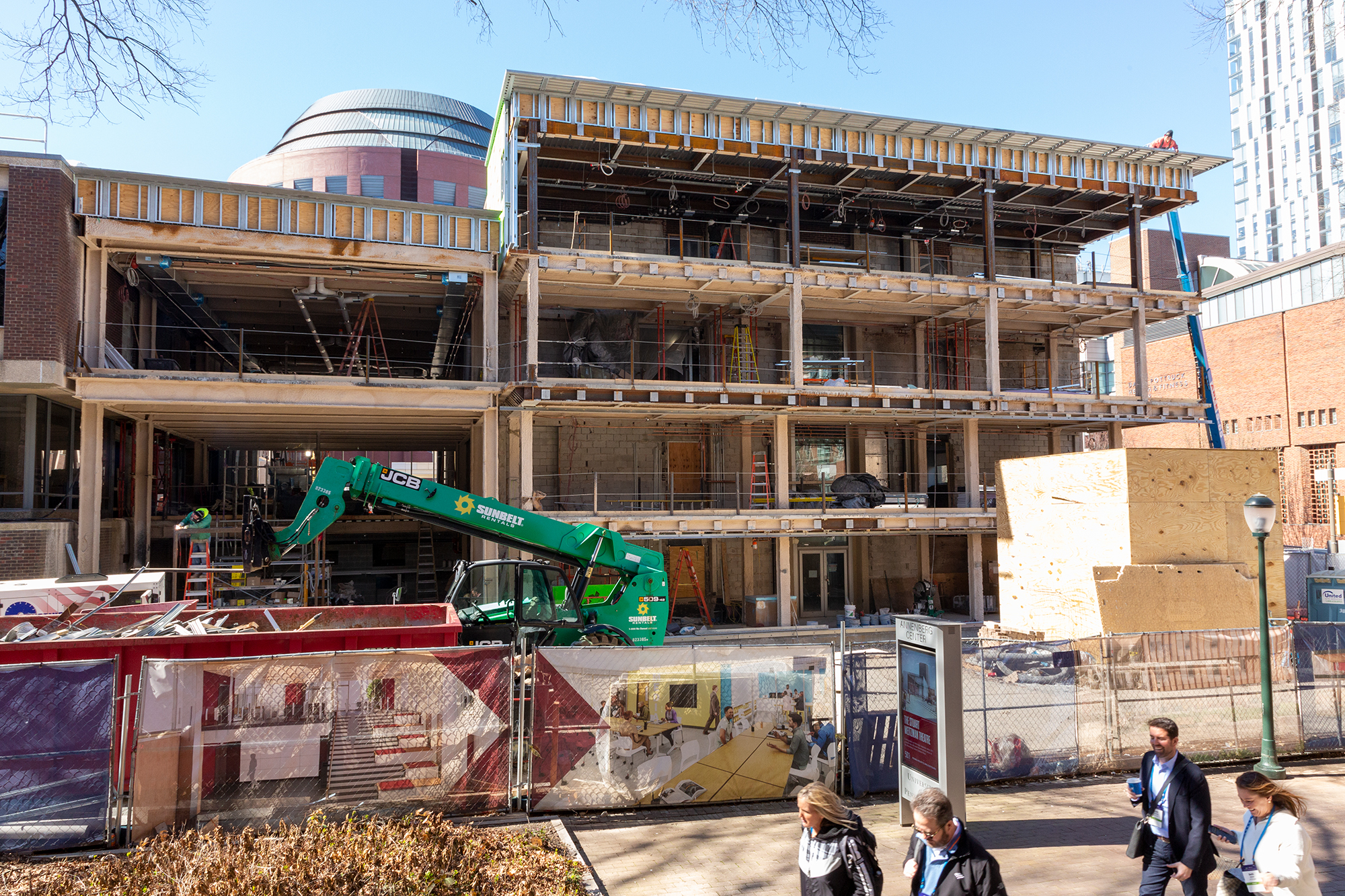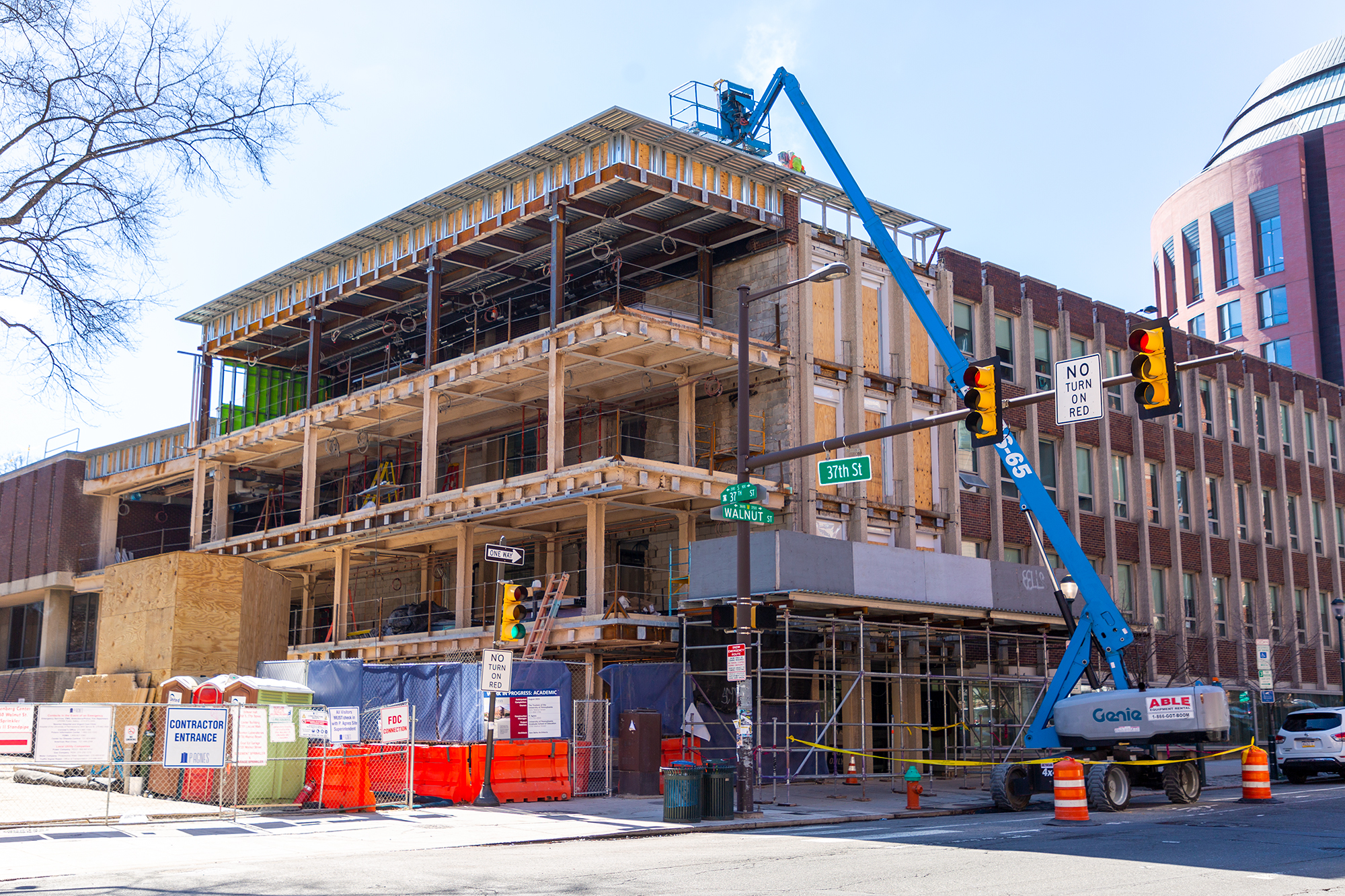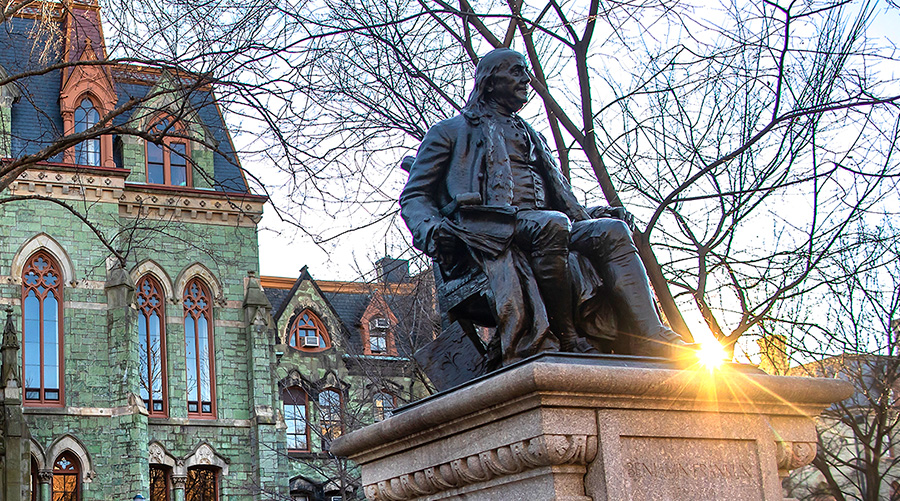During a construction project, laying the top beam is a significant milestone toward completion. At Penn, it is just the beginning.
New Homes for Novel Ideas
Two new building projects will bolster Penn’s strengths in education and energy science
This winter, Penn held “topping off” ceremonies for the Vagelos Laboratory for Energy Science and Technology at Penn Arts & Sciences and a significant building expansion at the Graduate School of Education. Both new facilities were born from a belief in the impact of cutting-edge spaces. They are being built thanks to philanthropic partners with the vision to see what will be made possible within their walls.
Vagelos Laboratory for Energy Science and Technology
Hot-button issues such as rising oil prices and climate change point to a resounding conclusion: the need for renewable energy sources is more pronounced than ever. The Vagelos Laboratory for Energy Science and Technology is being developed as a home for generating viable, sustainable, and scalable solutions for the energy needs our world faces now and in the future.
Launched with over $70 million in support from Diana and P. Roy Vagelos, C’50, PAR’90, HON’99, the state-of-the-art facility will integrate expertise from Penn Arts & Sciences and Penn Engineering, serving as the home for innovative energy research programs.
At the topping off ceremony on February 3, Penn leaders, faculty members, students, and construction workers signed the top beam before its placement atop the six-story structure.
Many generous friends have already supported integral spaces within the Vagelos Laboratory. Every additional donor will share the honor of helping to catalyze discoveries that can change prospects for the future of our world.
GSE Building Expansion
Over the past 20 years, the GSE student population has doubled, largely outgrowing its space at 3700 Walnut. As a result, workspaces and classrooms for the GSE community have been scattered across and beyond campus.
With its first new construction in more than 50 years, GSE’s physical expansion will bring all students and faculty under one roof, with some brand-new additions essential for preparing influential educators and scholars for the 21st century. Dean Pam Grossman hosted a champagne toast on January 25 with senior leadership, architects, construction team members, and staff from Penn’s Facilities and Real Estate Services.
“Today I want to take a moment to acknowledge the hard work and the dedicated team that has gotten us to this place,” said Dean Grossman during brief remarks. “This could serve as a case study of teamwork in its highest form—a group of individuals with different expertise, different perspectives, different skills—all coming together around a common goal.”
Philanthropy is crucial to help realize this historic building expansion. Support for the GSE Building expansion is an investment in the leaders who will influence education for generations.
To learn more or make a gift to support the GSE expansion project, email Laura Tepper, Vice Dean of Development and Alumni Relations.
To learn more or make a gift to support the Vagelos Laboratories in Penn Arts & Sciences, email Deb Rhebergen, Vice Dean of Advancement.











